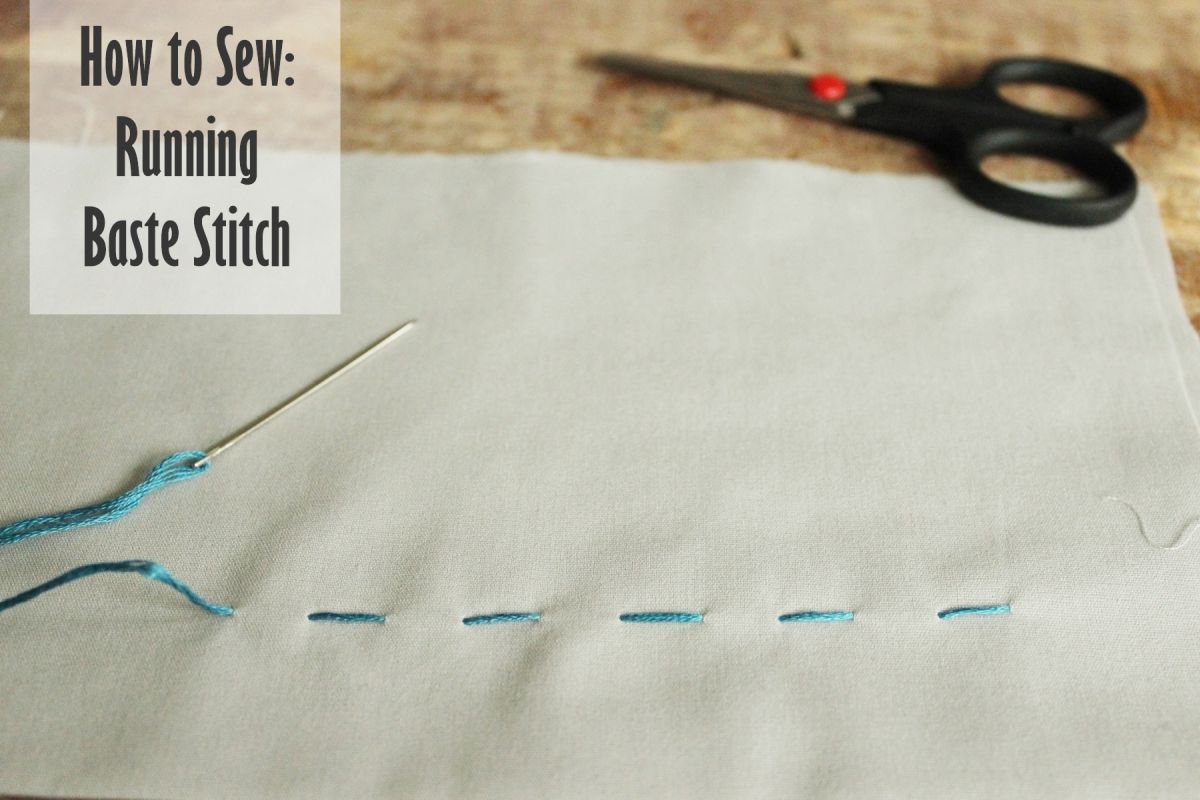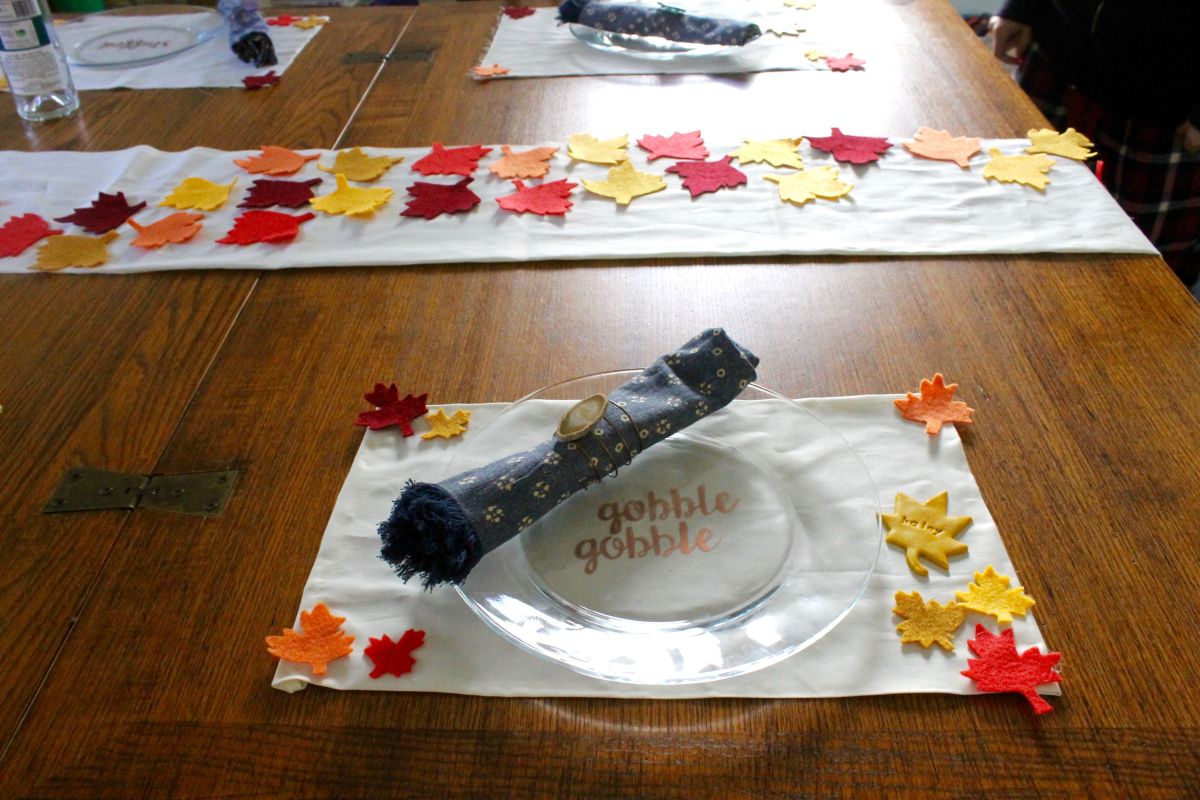Learning How To Sew – A Simple Guide And Projects To Get You Started
Due to the global COVID-19 quarantine, we find ourselves stuck at home and with a lot of spare time on our hands. Whether you’re working from home, taking a break from school or adjusting in some other way, now might be a good time to learn a new skill. Use the extra time to do something useful. For example, you could learn how to sew. There are plenty of tutorials online that you can follow and lots of beginner sewing projects that you can try. This could turn out to be a great activity to pass the time with.
The Running Baste Stitch

First of all, let’s go over a few different stitching techniques. They’re easy to learn and only require a needle, some thread and a piece of fabric. For the running baste stitch you start from the underside of the fabric, pushing the needle all the way through. Then about 1/2” – 3/4” away you press the tip of the needle straight down through the fabric and forward until the tip reaches the same distance and you push it upwards and through. Repeat.
The Running Stitch

This is similar to the running baste stitch but stronger. It’s also quite simple. Start from the underside of the fabric, bring the needle up through the top and then push the tip of the needle above and below the fabric to create small stitches in a straight line.
The Catch Stitch

This is a stitch you can use for hems and has an easy to identify X pattern. Once again, start from the underside of the fabric, bring the needle up and through to the top. Place the tip of the needle 1/2” above the exit thread, then move it 1/8” to the right. Press down through the fabric and then aim 1/8” to the left. Then press the tip of the needle 1/2” to the right of the first thread exit, down and then up about 1/8” to the right.
The Blanket Stitch

This is a decorative stitch which is commonly used for the edges of blankets, hence the name. To make it you need to create lots of loops which you gradually connect together so each stitch holds the previous one in place. It can seem a bit more difficult but it’s easy to learn the rhythm once you get the hang of it.
The Whip Stitch

The whip stitch is perfect for hems because it’s very sleek and almost invisible. It’s done at a diagonal and it has a very nice and satisfying pattern. It’s also fast and easy. Starting from the underside of the fabric, bring the needle up and throw, then press the tip 1/2” above, diagonally and to the right of the original exit point, then aim 1/2” above and to the left and pull the thread out to the top.
The Slip Stitch (or Ladder Stitch)

Here’s another good hem stitch and this one is most commonly used for closing up homemade pillows. Perhaps now would be a good time to craft one. The advantage is that the stitch is almost invisible, especially if you use thread that matches the fabric. It’s quite meticulous but well worth it in the end.
The Back Stitch

The back stitch has a very distinctive look. It’s also very strong which makes it perfect for a lot of different projects. It is however more time-consuming than the others but it’s also pretty if done correctly. With this stitch it constantly feels like you’re sewing backwards, hence the name.

Now that you’re familiar with some of the most basic stitching techniques and you know what they’re used for, it’s time for a project. There are plenty of things to do around the house that require sewing. For example, you could work a bit on your sheets and turn a flat sheet into a fitted one that sits nice and snug around the mattress. Hopefully you have enough elastic for this project.

You can also put your sewing techniques to the test by making a bolster pillow from scratch. The project does require you to have a bolster pillow form so perhaps there’s an old one that you can give a makeover to. You’ll also need a zipper, two large buttons, a needle and thread and of course some fabric. You can also add ribbon and a few extra details to customize your pillow design with.
Simple no sew projects

There are also a bunch of cool projects that don’t require any sewing even if it seems like they should. For example, this table runner makes use of glue instead of a needle and thread which makes things considerably easier and faster. Of course, this wouldn’t be a big problem if you were to use a sewing machine instead, although the stitch would be visible in that case.

You can also avoid any sewing by using iron-on bonding for some of the small projects. You can make beautiful fabric napkins using this technique and they’ll have a nice clean edge plus they’ll be done in minutes. You can have a lot of fun with different types of fabric in different colors and patterns and create a custom set.

There’s even big projects that can be done with absolutely no sewing involved. You can actually reupholster an entire chair without having to use a needle and thread the entire time. Yes, it’s a time-consuming project but if not now then when? If you have fabric, foam and a staple gun then go for it. You might only need to replace the fabric if everything else is in good shape so have a look at your chair before getting your supplies ready.
Best 5 Sewing machines
Some projects are too big or complicated to be stitched by hand so it can also be handy to have a sewing machine. Below you can find our top 5 picks but if you’re interested in finding out more about sewing machines in general and other different models head over to DIYs for more details and information.
1. Brother Sewing and Quilting Machine, CS6000i

As useful as hand-stitching is for a lot of small projects, if you plan on taking your sewing skills to the next level you might want to get a sewing machine. There are plenty of models to choose from a lot of affordable ones that get the job done. A great option is this sewing and quilling machine that lets you select from 60 different stitches and has an LCD display. It also has an automatic needle threader and a jam-resistant drop-in top bobbin. It comes with a few accessories such as a hard protective case, 10 sewing feet, a needle set and 3 bobbins.
2. SINGER Simple 3232 Sewing Machine with Built-In Needle Threader

This Singer sewing machine is a perfect choice for beginners. It’s compact and portable and it features 32 built-in stitches and a built-in automatic needle threader. It’s easy to use and intuitive and you can have everything ready in only seconds. The maximum speed of this sewing machine is 750 stitches per minute and you can sew several layers of thick fabric thanks to the high presser foot which can be raised. There’s also an automatic reverse button conveniently placed within reach.
3. Brother Machine, ST150HDH, 50 Built-in Stitches LCD Display

Another nice option is the ST150HDH sewing machine which offers 50 different stitches including a bunch of decorative ones. It also features 5 auto-size buttonholes and an advanced needle threading function with a lever and a jam-resistant drop-in top bobbin. It comes with accessories such as 9 sewing feet and a set of heavy weight sewing needles. Additionally, you can easily view all sorts of details such as the stitch selection, size and recommended sewing foot on the LCD display.
4. Brother Quilting Machine, XR9550PRW

In case you want more options, this particular sewing machine features a total of 165 unique built-in stitches including 8 styles of auto-size buttonholes. There are also 55 alphanumeric sewing stitches. The machine also has an automatic needle threader and a drop-in top bobbin. It also comes with accessories such as a protective hard cover, wide table and 8 sewing feet. It has an LCD display that is easy to use and gives you access to the settings and all the different stitching options.
5. SINGER Start 1304 6 Built-in Stitches

This is the Singer Start, a compact sewing machine with a sturdy, heavy-duty metal frame that keeps it still and stable and a stainless steel bedplate that provides smooth and even sewing. You can choose between six basic stitches using a simple dial and the length and width of the stitch are preset which makes this a nice sewing machine for beginners. There’s also a 4-step buttonhole feature that you can use. The extension table is removable and slides off easily in case you need to take it out. Another nice advantage int he compact size and lightweight design.
